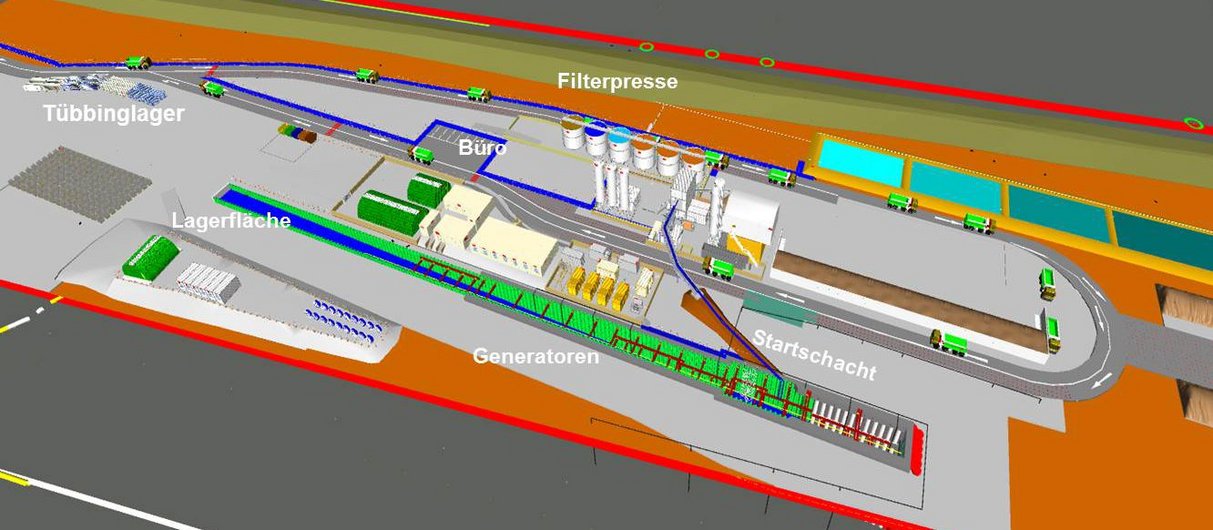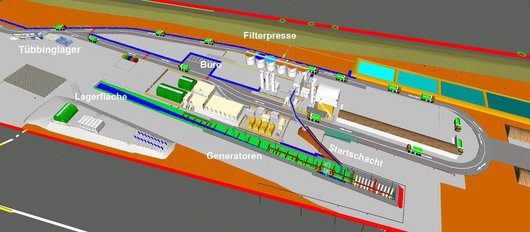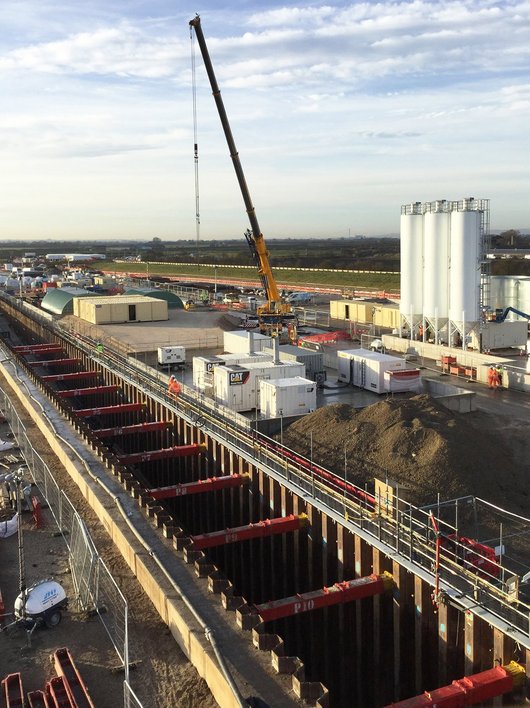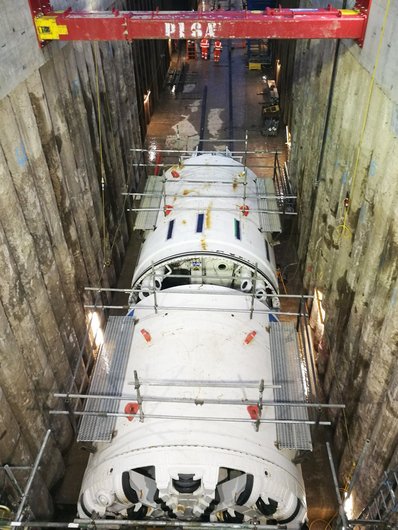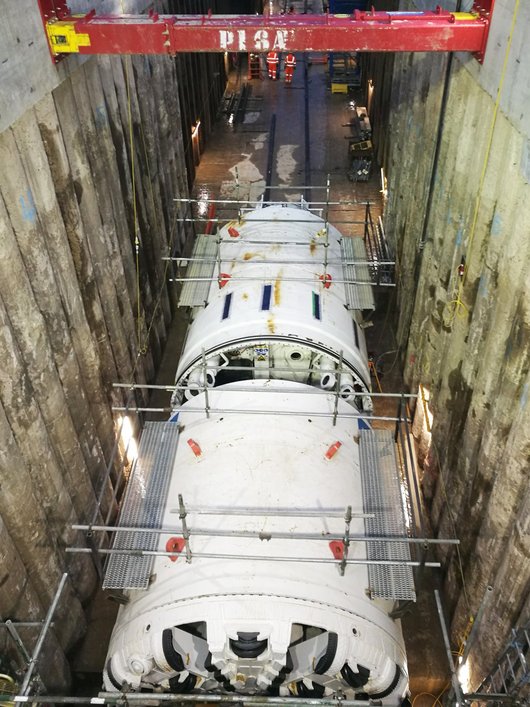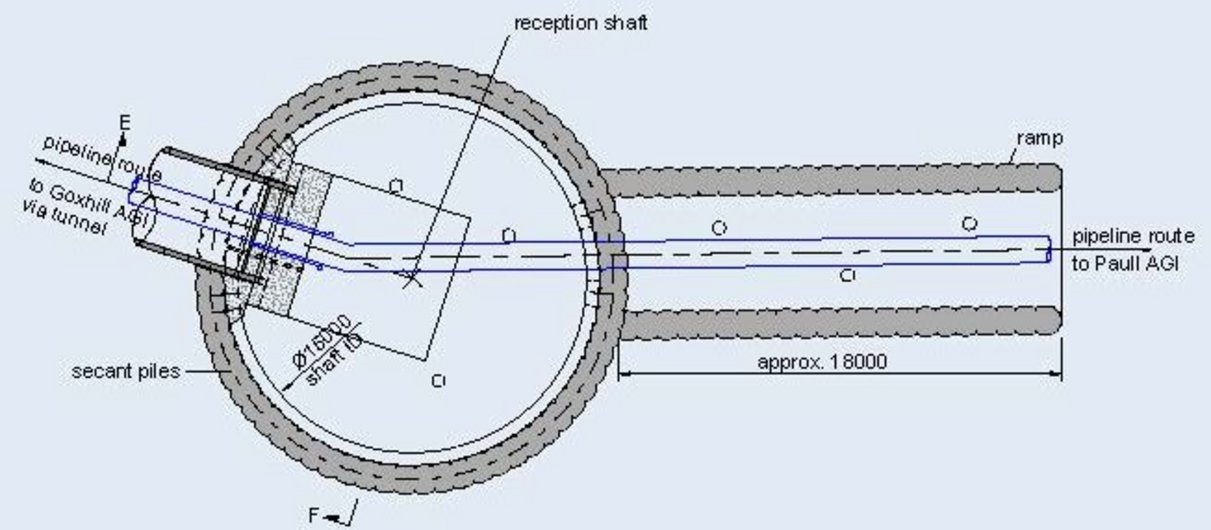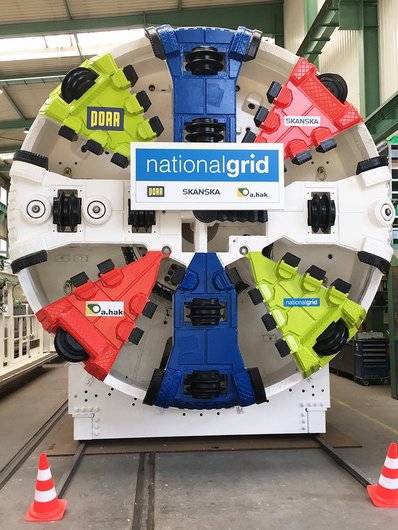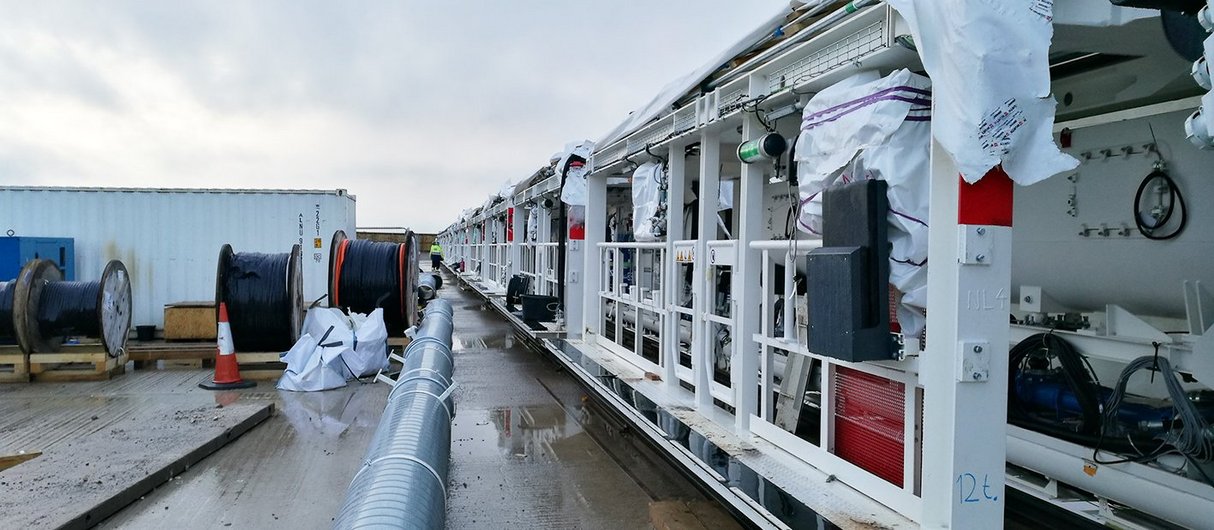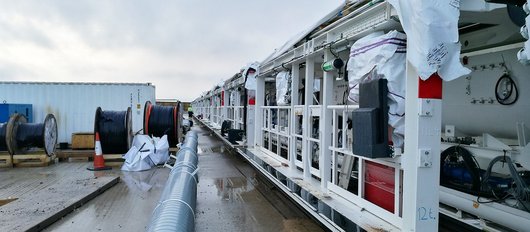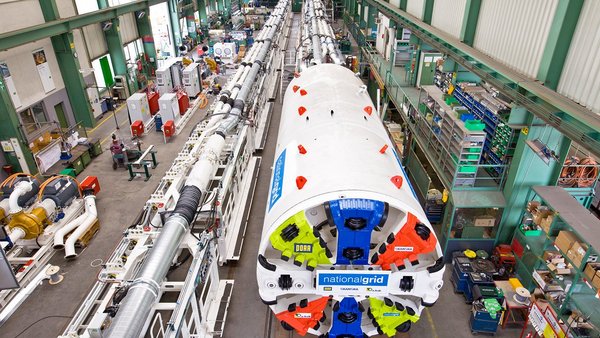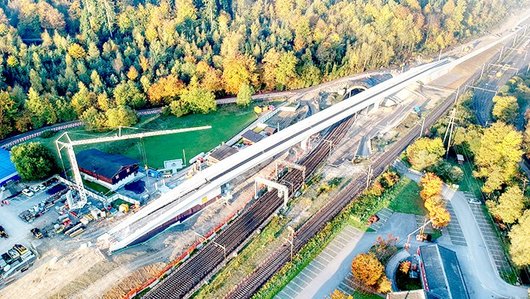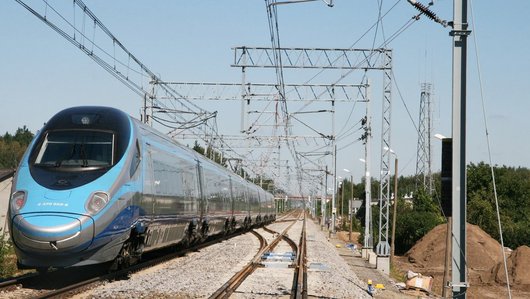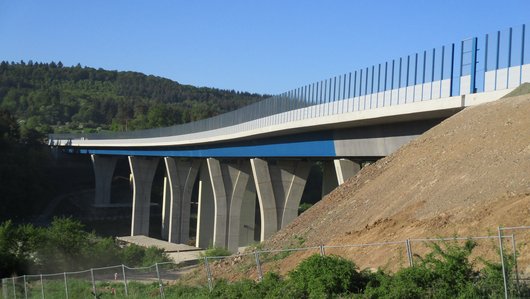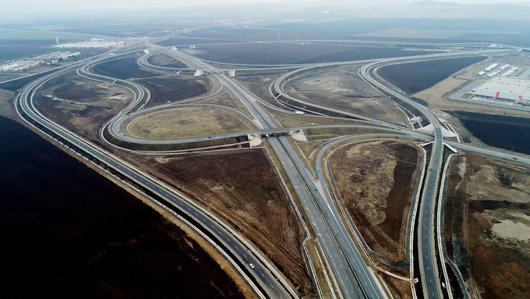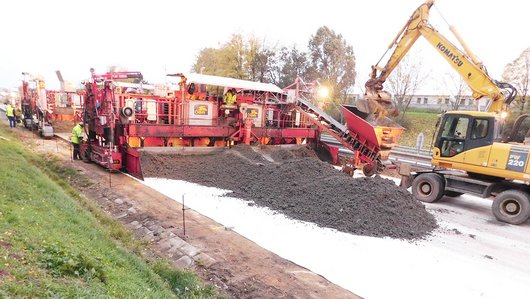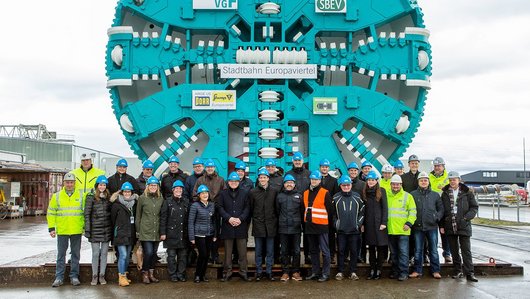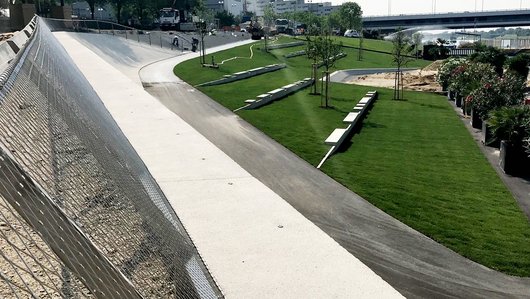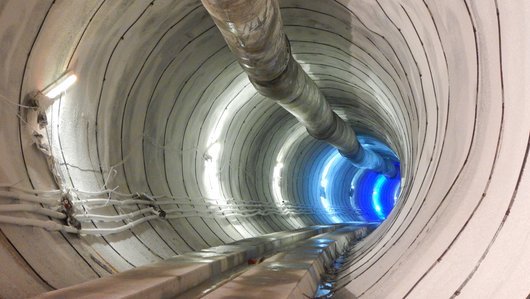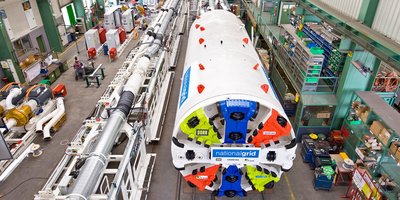
Humber Crossing – Feeder 9 Replacement
The existing Feeder 9 gas pipeline must be replaced. It will run through a tunnel which is to be constructed under the Humber estuary in England.
4.9km will be excavated by means of a Slurry tunnel boring machine. When finished, the Humber Pipeline Tunnel Joint Venture and National Grid will be able to set a new world record: the longest gas pipeline inserted into a tunnel in one piece.
-
EmployerNational Grid plc
-
ContractorJoint Venture bestehend aus PORR (40%), SKANSKA (40%), A.HAK (20%)
-
Order typeDesign & Build
-
Project typeCivil engineering, Tunnelling
-
Project scopeConstruction of a 4.862km tunnel to house a gas pipeline
-
Order volumeGBP 91.3 million (about EUR 108 million)
-
Construction start09/2016
-
Construction endEnd of 2020
Background
The existing pipeline is 5km long and runs in a trench along the river bed between Paull, on the north bank of the Humber, and Goxhill on the south bank. Over time, tidal patterns have eroded the river bed, covering the pipeline, leading to parts of it at risk of becoming exposed. Recognising this issue, National Grid developed an engineering solution to protect the pipeline by covering potentially exposed areas with gravel-filled bags with concrete frond mattresses placed over the top.
These incorporate plastic fronds to mimic seaweed and encourage the settlement of sand and silt. This solution ensured the pipeline could continue to operate normally in the short-term and inspections have shown it has been effective and successful for now but not for long term.
Challenges are the highly confined spaces inside the tunnel and its length: nearly 4.9km with no intermediate shafts.
Project
A 4.862km long tunnel is now being constructed as a long-term solution. The tunnel with an inner diameter of 3.65m will be excavated by means of a Slurry tunnel boring machine (TBM) with an excavation diameter of 4.38m. 4 rhomboidal and 2 trapezoidal precast concrete segments will be assembled in the tail skin of the shielded machine to build a complete tunnel ring of 1.20m length. The segment thickness is 225mm. The precast concrete segments will be reinforced with rebar in the areas with a minimum overburden and steel fibre reinforcement in all other areas.
The tunnel advance began in April 2018 and is assumed to be completed within 12 months. The tunnel excavation works start from a launch pit on the south bank of the Humber estuary, near the village Goxhill in Lincolnshire and will end at the north bank of the estuary, near Paull in Yorkshire. After completion of the tunnelling works and stripping of the tunnel a further challenge is the insertion from the gas pipeline. From a safety point of view no pipe welding activities are allowed in the tunnel. Therefore the pipes with a single length of 12m will be completely welded to pipeline sections of 624m on the pipe stringing yard on surface before they will be moved into the ramp sections. On the ramp two large pipe thrusters are installed to press the pipeline sections into the tunnel. A particularity of this process is the flooding of the tunnel and the floating of the pipeline into the tunnel. Once the first pipeline section is floated into the tunnel the next 624m section will be connected by welding and also moved into the tunnel. After completion of the pipe insertion the pipeline will be connected to the AGI’s (Above Ground Installations) before decommissioning the old Pipeline.
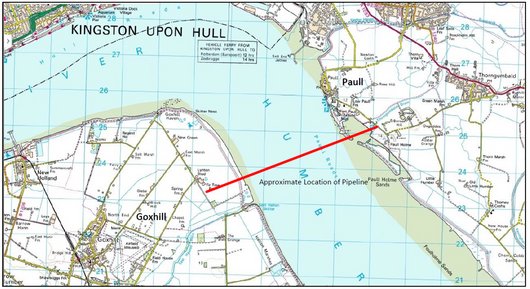

Structural details
Geology
The tunnel will be excavated at a minimum cover of 5m and a maximum cover of 33m. From a geological perspective, the tunnel will initially be driven through approximately 4,000m of chalk formations (Burnham Chalk Formation and Flamborough Chalk Formation). At the end of the tunnel drive, we will encounter glacial deposits (soils composed of sand, gravel, silt and clay) over a length of approximately 800m, and young alluvial soils around the target shaft. Tidal patterns of up 6.5m must be taken into account when planning the works. The planned vertical alignment follows a decline of the gradient of approx. 4% for a length of 450m. Under the estuary the tunnel drive is nearly horizontal and will change to an inclined gradient of approx. 4% on the north bank of the estuary for the last 600m. The maximum depth of the tunnel was optimised in compliance with the applicable regulations governing any potential works using compressed air inside the excavation chamber. At the same time, the requirements for the minimum rock cover depth were also met.
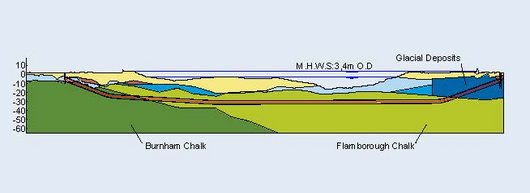

Challenges
A number of project-specific features had to be taken into consideration when carrying out the works. For example, the construction site was set up on top of very poor-quality substrate, which necessitated extensive soil stabilization measures involving the installation of a base course made of an up to 1m thick layer of gravel. The restriction of traffic periods for lorries driving to and from the construction site to 5h/day was another complicating factor. As the construction site is situated near the coast, heavy winds often occur, which may make it necessary to interrupt crane operations. This was already factored into the tunnel servicing plans to minimise downtimes. High tides may also cause flooding of the construction site, which means that all the installations must be flood-proof. The narrow inner diameter and total length of the tunnel also placed increased demands on the safety arrangements and tunnel logistics. In addition, a dispersion of large quantities of soil in the fluid cycle is to be expected when using a Slurry-TBM in chalk formations. This also had to be taken into account when planning the separation plant. And finally, the Health & Safety requirements for planning and execution are much more stringent in the UK than in Central Europe.
PORR's experiences gained in the course of the Emscher BA 40 sewage drain project, which was successfully carried out under similar conditions, had a positive impact throughout the entire construction site planning process.
The launch shaft and the reception shaft
The construction launch site for all tunnel construction works is located in Goxhill. The launch shaft for the tunnel excavation works is 60m long, 7m wide and has an 8m deep portal. An approximately 140m long ramp with a 4% gradient connects the shaft to the surface of the terrain.
The tunnel boring machine (TBM) is serviced for the excavation works by a wheeled service vehicle along the ramp. Wind-related interruptions to crane operations caused by heavy winds from the nearby coast can thus be entirely avoided. It also meant that the TBM, with a total length of 160m, could be completely assembled before excavations began.
The launch shaft was constructed inside a construction pit protected by reinforced bored pile and sheet pile walls embedded in the chalk layers. The water levels in the construction pit were lowered during the excavation works using a well point extraction system. Once the in-situ concrete floor had been installed and anchored to the retaining wall, the extraction system was turned off. The reception shaft in Paull will be constructed inside a circular construction pit, 12m deep, with a diameter of 15m, and protected by bored piles. Another well point extraction system will be in place here during excavation works.
Tunnel construction method
The agreement with National Grid stipulates the use of a TBM with segment lining; while the choice of the most suitable method was left to the joint venture. Favourable risk assessments meant that the Slurry method was selected for use, despite higher direct costs. The TBM will break through from the launch shaft in Goxhill through a bored pile wall reinforced with
fibreglass with a sealing block placed in front of it. This conducts the impact forces into the bottom of the shaft via a reinforcement structure. The TBM will exit the tunnel through a fibreglass-reinforced bored pile wall into the flooded reception shaft. This means that it will not be necessary to install a separate sealing structure.
Separation
A Slurry Treatment Plant comprising filters, cyclones and chamber filter presses will be used for separation. This involves in particular the reduction of residual moisture from the material excavated from the chalk strata to an acceptable level for the purposes of transport and landfill.
Tunnel logistics
As no intermediate shafts have been planned throughout the entire length of the tunnel, tunnel logistics and emergency provisions will have to be carried out via the launch shaft. In addition to its length, the tunnel's narrow inner diameter, only 3.65m, presented a major challenge.
Multi service vehicles (MSVs) were selected for the tunnel logistics. These have a number of advantages over track service vehicles, such as improved braking performance on slippery surfaces, smaller diesel engines and a direct line of sight through the driver's cabs on either side. Ramps can also be used to optimise logistics inside the launch shaft: the MSVs can drive to the surface along these ramps, where they can be loaded up immediately. This eliminates the need for additional vertical transport.
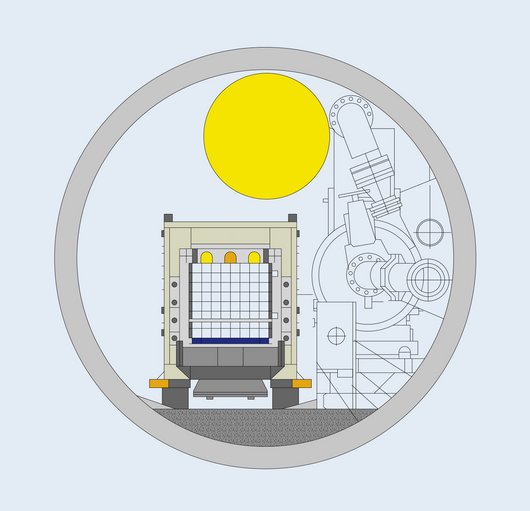

The MSVs can transport all the tunnel segments needed for one stroke in a single load. A cabin for up to four people is permanently installed and an additional cabin for up to twelve people can be connected for shift changes. An additional loading platform is provided. The MSVs are 17.15m long, 1.26m wide and 1.90m high (incl. load). A loaded vehicle can be driven at up to 15km/h.
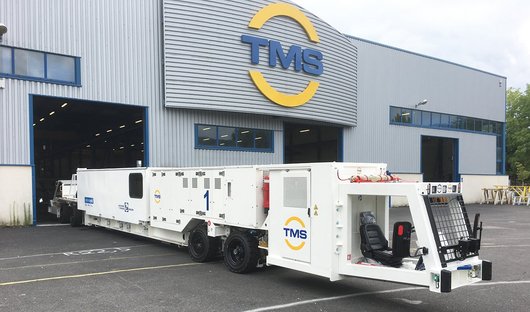

Workplace Health & Safety
In addition to standard health checks and training measures for the staff employed on site, this also featured the following:
- An emergency control centre installed above ground, which monitors important parameters of the TBM, e.g. fire detection, air quality and gas leaks. Furthermore, a control centre for maintaining communications between the machine and the surface will be set up here.
- A rescue chamber installed on the machine, offering 24-hour protection to the persons inside the tunnel in the event that evacuation is not possible.
- Self-rescue devices, which provide the people inside the tunnel with oxygen in the event of smoke, fire or gas, have been installed on the machine inside the tunnel and on the MSVs.
- Fire alarm and fire suppression systems have been set up in areas with a high risk of fire.
- A water bulkhead at the end of the tunnel and smoke bulkheads dividing the tunnel into five sections.
Furthermore, a training unit, known as the tunnel mock-up, has been set up on the construction site itself to better prepare the tunnel crew for accessing the cutterhead via the air-lock, changing tools or ring building . The tunnel mock-up involves a tunnel tube consisting of 21 rings and a TBM unit consisting of a working chamber, a pressurised air-lock and cutting tools.
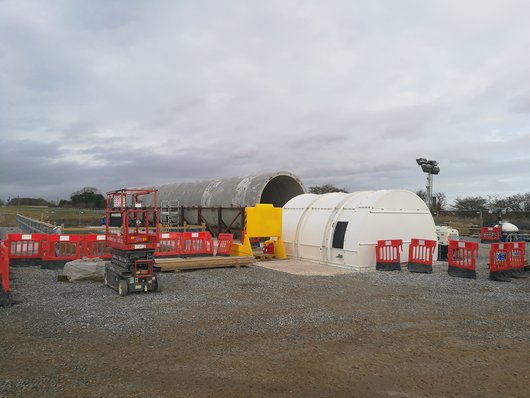

Pipeline works
The pipeline is provided by the employer National Grid. It is 1.05m (42inches) diameter and is delivered to the construction sites in 12m units. The pipeline is coated with an anti-corrosion layer and additionally encased in concrete to protect the coating from damage.
The pipes with a single length of 12m will be delivered to site by truck. Two different types of pipes will be used on the project; concrete weight coated (CWC) for the installation inside the tunnel with a pipe weight of 16t and fusion bonded epoxy (FBE) coated for installations outside the tunnel with a pipe weight of 5.9t. Unloading and stockpiling in a pipe lay down area will be done by crane using vacuum technique for the FBE pipes and traditional equipment for the CWC pipes. In a pipe stringing yard eight strings are foreseen to prepare the pipeline sections for insertion into the tunnel. Two lines are foreseen for a section length of 624m and six lines for 612m. The pipes will be semi-automatically welded allowing for a tolerance or mis-alignment of 0.5°. All welds will be inspected and tested using automatic ultrasonic testing.
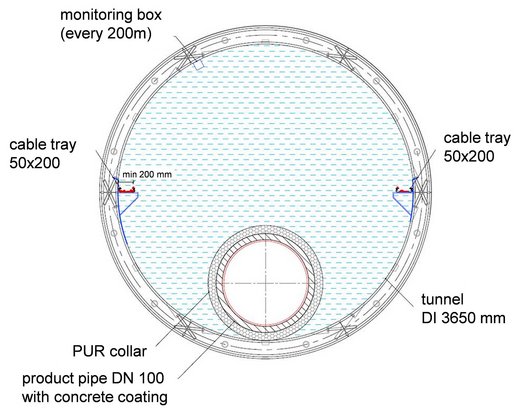

The pipe string then will be winched from the stringing yard to the pipe thruster in the launch ramp. For the installation of the pipe string into the tunnel the tunnel will be filled with water. The total amount of water required is approx. 51,000cbm. The water will be supplied from the River Humber into a lagoon where it will be treated before pumped into the tunnel. Two pipe thrusters each with a capacity of 500t are installed in the launch ramp, however only one is required for pushing the pipe into the tunnel, the second one is to mitigate any possible delays during installation. Once the first section is pushed into the tunnel a tie-in weld to the second string will be done. In total seven tie-in welds are required before the pipeline is complete.
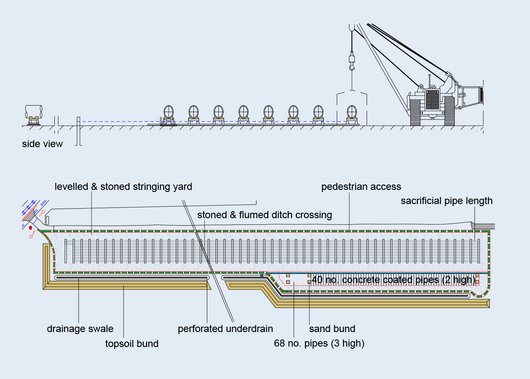

After an intensive inspection and testing of the pipeline has been done the final installation/completion of the tunnel bulkheads and connection to the existing Above Ground Installations (AGI) in Paull and Goxhill will be executed.
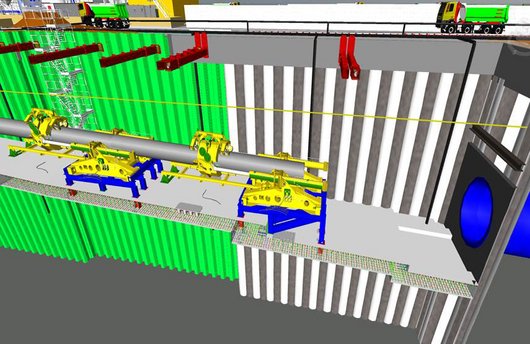

Technical data
-
Machine typeSlurry-TBM
-
Order intakeApril 2016
-
Beginning of excavation worksApril 2018
-
End of excavation worksSummer of 2019
Summary
The Humber Crossing – Feeder 9 Replacement project is PORR's first project in the United Kingdom. The stringent requirements placed on the project execution by the site's close proximity to gas-bearing facilities, working in a coastal area with a high risk of flooding, designated conservation areas and the high workplace safety standards in Great Britain, meant that the team
faced a number of special and interesting challenges. After all the works have been successfully carried out, PORR – in cooperation with the entire joint venture and National Grid - will have set a new world record. The newly installed pipeline will be the world's longest gas pipeline to be inserted into a tunnel as a single string.

